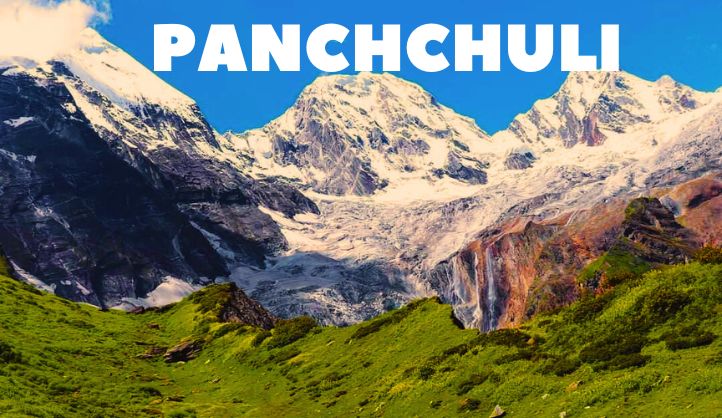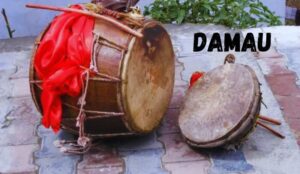Nestled in the Eastern Kumaon Himalayas, the Panchchuli peaks rise majestically, forming a crown of five snow-capped giants. These peaks, ranging from 6,334 meters to 6,904 meters in height, stand as a formidable presence, captivating the hearts of trekkers, adventurers, and nature lovers alike. This article delves into the history, mythology, geography, and cultural significance of Panchchuli, offering a glimpse into this awe-inspiring Himalayan treasure.
Legends and Meanings
The name “Panchchuli” itself holds a sense of mystery and intrigue. Literally translated from Hindi, it means “five hearths” (panch – five, chulha – hearth). One popular legend associated with the name links it to the epic Mahabharata. It is believed that the five Pandavas, after their victory in the war, used these peaks as their final cooking site before ascending to heaven.
Another theory suggests that the name is derived from the five distinct summits of the range, resembling the traditional cooking hearths used in the region. Regardless of the origin, the name Panchchuli adds a layer of cultural significance to these majestic peaks.
A Geographical Gem – Location and Formation
The Panchchuli massif lies in the Pithoragarh district of Uttarakhand, India, close to the village of Dugtu in the Darma Valley. It forms the natural boundary between the Gori Ganga and Darmaganga valleys, acting as a watershed for the region’s water systems.
Geologically, the peaks are part of the Kumaon Himalayas, which are younger than the loftier peaks of the Garhwal Himalayas to the west. These younger mountains were formed due to the collision of the Indian and Eurasian tectonic plates millions of years ago. The constant movement of these plates continues to shape the Himalayas, making the peaks a dynamic and ever-evolving landscape.
A Realm of Nature’s Beauty – Flora and Fauna
The region boasts a rich tapestry of flora and fauna. As you ascend towards the peaks, you’ll encounter a diverse range of vegetation. At lower altitudes, lush green forests of oak, rhododendron, and deodar dominate the landscape. As you climb higher, these forests give way to alpine meadows bursting with colorful wildflowers during the spring and summer months.
The fauna of the region is equally diverse. You might spot elusive Himalayan tahr, barking deer, and musk deer traversing the slopes. The region is also home to a variety of birds, including lammergeyers, Himalayan griffons, and Impeyan pheasants. If you’re lucky, you might even catch a glimpse of the majestic snow leopard, a solitary predator that calls the Himalayas home.
Exploring the Panchchuli Peaks
The Panchchuli peaks, with their challenging terrain and breathtaking views, are a magnet for experienced trekkers and mountaineers. The first recorded ascent of the range, specifically Panchchuli II, was achieved in 1973 by an Indo-Tibetan Border Police (ITBP) expedition.
Climbing Panchchuli requires technical expertise, proper equipment, and a high level of fitness. The trek typically involves traversing glaciers, moraines, and steep ridges, making it a demanding yet rewarding experience. The best time for attempting the trek is usually between March and September when the weather conditions are favorable.
A Trekker’s Paradise -Beyond the Summit
For those seeking a less strenuous experience, the region offers numerous trekking trails that cater to different difficulty levels. The trek to the base camp of Panchchuli provides stunning views of the peaks without requiring technical climbing skills. This trek allows you to immerse yourself in the beauty of the Himalayas, witnessing meadows bursting with wildflowers, cascading waterfalls, and serene alpine lakes.
Another popular option is the trek to Milam Glacier, nestled near the Panchchuli peaks. This route takes you through dense forests, offering opportunities to spot diverse birdlife and witness the unique ecosystem of the Himalayas.
A Cultural Tapestry – The People and Traditions
The region is home to the local inhabitants of Uttarakhand, known as the Kumaonis. Their rich cultural heritage and traditions are deeply intertwined with the mountains. The Kumaonis worship nature, and the Panchchuli peaks hold a special place in their spiritual beliefs. They believe that the peaks are the abode of deities, and they perform regular pujas (prayers) to appease them.
The region also boasts a vibrant folk music tradition with instruments like the dhol (drum) and the ransingha (horn) playing a prominent role. Traditional Kumaoni dances are performed during festivals, showcasing the rich cultural heritage of the region.
A Breathtaking Panorama – Witnessing the Magic of Panchchuli
The true magic of Panchchuli unfolds when you witness these majestic peaks firsthand. Here’s what awaits you:
-
Sunrise and Sunset Spectacles: One of the most captivating experiences in Panchchuli is witnessing the sunrise and sunset. As the first rays of the sun touch the peaks, they illuminate the snow with a golden hue, creating a breathtaking spectacle. At sunset, the snow-capped summits transform into a fiery canvas of orange and red, leaving an unforgettable impression.
-
Starry Night Skies: Away from the light pollution of cities, Panchchuli offers a chance to witness the night sky in all its glory. On a clear night, the Milky Way stretches across the canvas, and countless stars twinkle like diamonds.
-
Panoramic Vistas: Trekking through the region offers breathtaking panoramic views of the Himalayas. The landscape is a photographer’s paradise from lush valleys cradled by snow-capped peaks to cascading waterfalls and serene meadows.
-
Local Homestays: For a truly immersive experience, consider staying in a local homestay. These homestays provide an opportunity to interact with the Kumaoni people, learn about their way of life, and savor delicious local cuisine.
Preserving the Panchchuli Enchantment
The pristine beauty of Panchchuli is a treasure that needs to be protected. Here are some tips for responsible tourism:
-
Minimize Waste: Pack light and avoid single-use plastics. Carry reusable water bottles and dispose of waste responsibly at designated points.
-
Respect the Local Culture: Dress modestly when visiting villages and monasteries. Seek permission before taking photographs of locals.
-
Leave No Trace: Do not disturb the natural habitat. Avoid littering and adhere to designated trekking routes.
Exploring the Environs
The Panchchuli region offers a plethora of options beyond the majestic peaks themselves. Here are some captivating destinations to explore:
Munsiyari
Often referred to as the “Mini Kashmir” of Uttarakhand, Munsiyari is a scenic hill station located near Panchchuli. It serves as a base camp for treks to the region and offers stunning views of the Himalayas.
Thamari Kund
This natural pool, nestled amidst dense forests, offers a refreshing dip in the cool Himalayan waters.
Gori Ganga River
Rafting on the Gori Ganga River provides an exhilarating adventure experience amidst the stunning Himalayan backdrop.
Namik Glacier
For those seeking a more challenging adventure, the Namik Glacier trek takes you through challenging terrain to witness the beauty of this glacial formation.
Patal Bhuvaneshwar
Patal Bhuvaneshwar ancient cave temple, located near Pithoragarh, is a significant pilgrimage site and offers a glimpse into the region’s rich history and mythology.
Conclusion
The Panchchuli peaks stand as a testament to the majestic power and beauty of the Himalayas. From their captivating legends and diverse ecosystems to the challenging treks and breathtaking scenery, Panchchuli offers an unforgettable experience for nature lovers, adventurers, and spiritual seekers alike.
So, pack your bags, embrace the spirit of adventure, and embark on a journey to discover the magic of Panchchuli. Remember, it’s not just about reaching the summit; it’s about the incredible experiences and the profound connection with nature that this Himalayan crown offers.
FAQs about Panchchuli
1. What is Panchchuli?
Panchchuli literally translates to “five peaks” in Hindi. It refers to a group of five peaks in the Kumaon Himalayas, located in the Pithoragarh district of Uttarakhand, India.
2. Where is Panchchuli located?
The Panchchuli peaks are situated in the Pithoragarh district of Uttarakhand, India, near the border with Nepal.
3. What is the significance of Panchchuli?
The Panchchuli peaks hold religious significance for Hindus. They are believed to be the abode of five Pandavas – Draupadi from the epic Mahabharata. The majestic sight of the snow-capped peaks is also a major tourist attraction.
4. What are the five peaks of Panchchuli?
The five peaks of Panchchuli are:
- Nanda Devi (7816m)
- Nand Kot (6861m)
- Trishul (7120m)
- Arbuda (6250m)
- Surya (5430m)
5. What is the best time to visit Panchchuli?
The best time to visit Panchchuli is during the spring (April-May) and autumn (September-October) months. During these times, the weather is pleasant for trekking and sightseeing.





